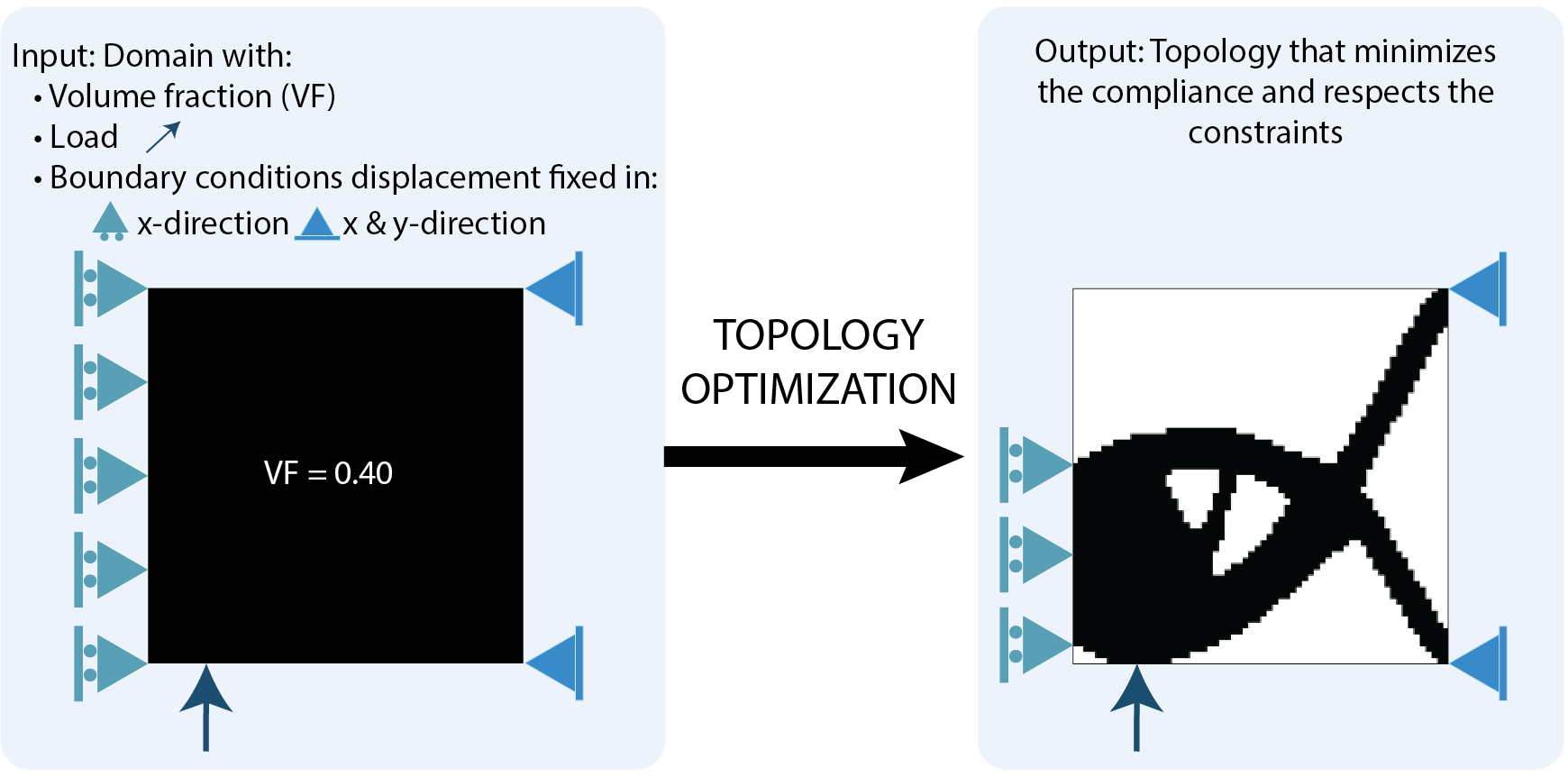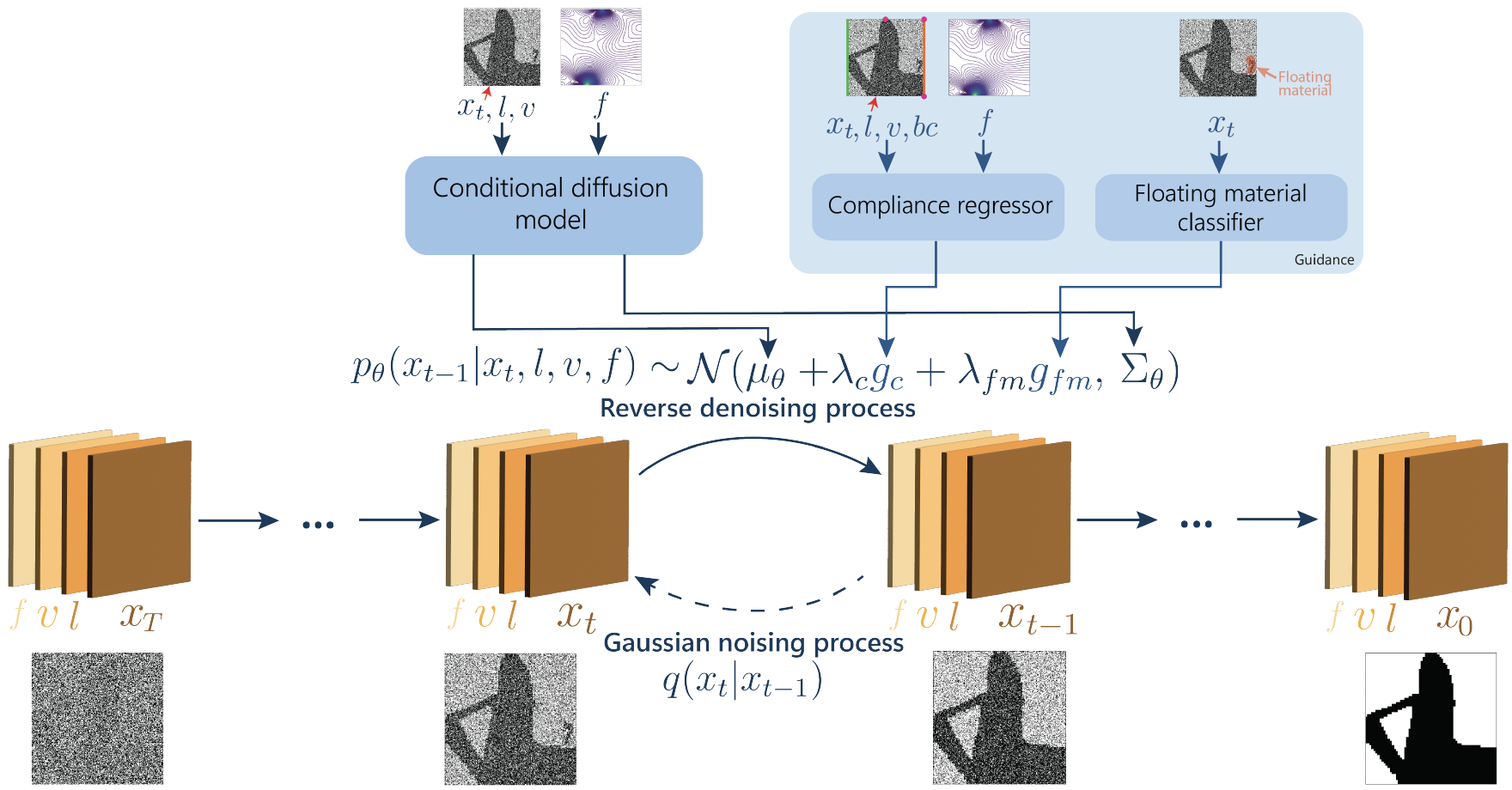TOPODIFF
Diffusion Models Beat GANs on Topology Optimization
1MIT
Diffusion Models Beat GANs on Topology Optimization
1MIT
TopoDiff introduces diffusion models to structural topology optimization. It uses a new guidance strategy to make diffusion models performance-aware and constraints-aware. In this work, we present three datasets for data-driven topology optimization and introduce a diffusion model incorporating external guidance, which outperforms a state-of-art GAN. You can find below the most up-to-date information on this project:
Topology optimization (TO) aims to find an optimal subset of material included in the full design domain under a set of displacement boundary conditions and loads applied on the nodes of the domain and a volume fraction condition. A structure is optimal when it minimizes an objective function, such as mechanical compliance, subject to constraints.

Traditional TO methods rely on Finite Elements Analysis (FEA). One popular method is the Solid Isotropic Material with Penalization (SIMP) method. SIMP associates every element of the mesh with a continuous density to perform gradient-based methods. These traditional methods have two major pitfalls : they are often slow, and may lead to sub-optimal solutions because of the use of penalization factors or post-processing.
Many deep learning methods have recently been developed to speed up and improve the quality of topology generation. The most recent works rely on conditional GANs to generate new topologies based on input constraints. Yet promising, most of these methods show limited generalization ability to unseen constraints and often generate manufacturable designs.
Discover below how TopoDiff’s dataset was built. More details are provided on the Dropbox containing the downloadable dataset.
To train our main diffusion mode, we used a dataset of 33000 64x64 2D images containing 6 channels representing the optimal topology, the prescribed volume fraction, the von Mises stress, the strain energy density and the loads applied to the boundary of the domain.
Two other datasets were used to train respectively the regressor predicting mechanical compliance and the classifier predicting the presence of floating material.
In order to test our final model, we used a dual-level test dataset. The level 1 test data contains unseen combinations of constraints with in-distribution boundary conditions. The level 2 test data contains unseen combinations of constraints with out-of-distribution boundary conditions.
TopoDiff’s main architecture is a conditional diffusion model, which takes as input a randomly sampled white noise and the design constraints and gradually denoises the noise until reaching an actual mechanical structure. In order to improve the performance and manufacturability of the generated structures, we introduced a guidance mechanism to encourage denoising steps that minimize the compliance predicted by a separate regressor and avoid floating material, detected by a separate classifier. The figure below summarizes TopoDiff’s architecture:

We benchmarked our model with TopologyGAN, a state-of-art cGAN architecture for topology optimization, using four metrics assessing the physical performance of the structures, but also the manufacturability and respect of constraints. Our model outperforms TopologyGAN on all metrics of interest. We also conducted an ablation study to evaluate the impact of our guidance strategy on performance.

François Mazé, and Faez Ahmed. "Diffusion Models Beat GANs on Topology Optimization" In Proceedings of the AAAI Conference on Artificial Intelligence, 2023.
@inproceedings{maze2022,
author={François Mazé and Faez Ahmed},
title={Diffusion Models Beat GANs on Topology Optimization},
booktitle={Proceedings of the AAAI Conference on Artificial Intelligence},
year={2023},
}
The authors gratefully acknowledge the funding received from Mines Paris Foundation. They would also like to thank MISTI France for supporting this research.